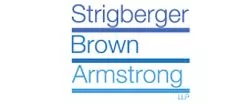The plaintiffs' claim relates to an incident that took place on September 8, 2013. On that day, a car being driven by the plaintiff, John Bertolli, drove through a pothole located on McCowan Road, in the City of Markham and the Region of York. Consistent with the requirements of the Municipal Act a notice letter was delivered to the City of Markham advising it of the accident, asserting it had been negligent in the upkeep of the road, was responsible for any damage suffered by the plaintiffs, asking that its property liability insurers be notified, and raising the prospect that an action would be commenced against it. The letter began as follows:
Please be advised that I have been retained by the above noted individuals in connection with personal injuries sustained while driving on McCowan Road, north of Dennison Street, Markham, on September 8, 2013.
The City of Markham ("Markham") immediately wrote to counsel for the plaintiffs advising that the location of the accident fell under the jurisdiction of the Region of York ("the Region)", within which Markham is located. Markham passed the letter it had received on to the Region. Counsel for the plaintiffs followed up and sent a letter to the Region, containing the same advice as the letter it had sent to Markham. In particular, it included the same introductory words as quoted above.
Brennan Paving and Construction Ltd. ("Brennan Paving") was the road maintenance contractor identified as being responsible for the upkeep of the road at the location of the accident. The Region passed on the letter it had received to Brennan Paving.
The Statement of Claim was issued on August 27, 2015 naming the City of Toronto and John Doe Maintenance Company as defendants. The Claim notes the location of the accident as "northbound on McCowan Road, in the City of Toronto" and nothing more. It is important to note that parts of McCowan Road are located in the Region (which includes Markham) and other parts in the City of Toronto. At the time of the accident, and for the five years prior, Brennan Paving was not, and had not been, responsible for the maintenance on the part of McCowan Road that is located in the City of Toronto.
The Statement of Claim was served on the City of Toronto on September 1, 2015 and particulars of the exact location of the alleged accident were requested. In response, counsel for the plaintiffs advised that the "pothole was located in the northbound curb lane of McCowan Road, approximately 49 feet north of the white line/traffic lights at the intersection of McCowan Road and Dennison Street."
Thereafter counsel for the plaintiffs began the process of bringing a motion to substitute the Region for the City of Toronto as a defendant in the action. Counsel also wrote to the Region asking for "...the legal name of the maintenance company". No such letter was written to the City of Toronto prior to the issuance of the Statement of Claim.
Once Brennan Paving was identified, the plaintiffs served a Fresh as Amended Notice of Motion to amend the Statement of Claim to substitute the defendant City of Toronto with the Region and to substitute or add Brennan Paving.
The Master granted the motion allowing both the Region and Brennan Paving to be the defendants named in the action, based on the principle of misnomer.
Brennan Paving appealed the Master's Order.
On setting aside the Master's Order, the motion judge reviewed the doctrine of misnomer that states:
5.04(2) At any stage of a proceeding the court may by order add, delete or substitute a party or correct the name of a party incorrectly named, on such terms as are just, unless prejudice would result that could not be compensated for by costs or an adjournment.
The court held that the words "add" "delete" and "substitute" as found in the rule should be read each as modifying the authorization to "correct the name of a party incorrectly named". The test, for misnomer, according to the court must start with the question:
How would a reasonable person receiving the document take it? If, in all of the circumstances of the case and looking at the document as a whole, he would say to himself: "Of course it must mean me, but they have got my name wrong," then there is a case of mere misnomer. If, on the other hand, he would say: "I cannot tell from the document itself whether they mean me or not and I shall have to make inquiries", then one is getting beyond the realm of misnomer.
Justice Lederer relied on the reasoning in the Court of Appeal decision, Essar Algoma Steel v Liebherrr (Canada) Co. to conclude that there are two questions to be answered:
- Whether the failure of the plaintiffs to correctly name the Region as a defendant is a misnomer, and
- Even if a misnomer occurred, should the Court exercise its discretion to refuse to permit the requested correction?
The court was clear that the onus or responsibility for identifying an otherwise unrecognized defendant lies with the plaintiffs and not the Region. The court also felt that it was incumbent on the plaintiffs to do something to figure out who, or what, John Doe Maintenance Company actually was, and they could have done so before issuing the Statement of Claim. It was relevant to the court that the accident occurred on September 8, 2013 and the Statement of Claim was not issued until August 27, 2015, nearly two years later. The court noted there was no reason why, during that time, a request could not have been made to the City of Toronto to determine the name of the maintenance company, and allowed the appeal.
The plaintiffs/respondents appealed. In dismissing the appeal, the Court of Appeal reviewed both the Master's decision and the Superior Court's decision and found that although the site of the accident, as identified in the Statement of Claim, was not particularized beyond alleging that it occurred on McCowan Road, in the City of Toronto, the Master concluded that the substituted defendants (the Region and Brennan Paving) would have known they were the intended defendants upon reading the Statement of Claim. The Master also assumed that the substituted defendants would have received a notice letter, delivered to them within days of the alleged accident, which would have identified the precise location of the alleged accident at a particular point on McCowan Road, which was in the Region when, in fact, the notice letter identified Markham as the relevant municipality. Markham forwarded the letter to the Region who, in turn, forwarded it to Brennan Paving.
The Court of Appeal held that even when read in combination, the notice letter and Statement of Claim were not capable of supporting an inference that the substituted defendants (City of Toronto and Brennan Paving) were the intended defendants. Without reference to the pothole in the notice letter and without particulars of the precise location of the accident alleged in the Statement of Claim, the reasonable reader could not know, without further inquiry, that the documents referred to the same accident. As the court states:
Put simply, the Master's inference that the substituted defendants would know they were the intended defendants was not available on any reasonable view of the evidence. The Master's order was properly set aside.
This decision clarifies the test for misnomer and makes it clear that it is the plaintiff's responsibility to identity the proper defendant(s) and to take steps to make that determination before issuing a Statement of Claim.
See Bertolli v Toronto (City), 2017 ONSC 7534, aff'd 2018 ONCA 601
The content of this article is intended to provide a general guide to the subject matter. Specialist advice should be sought about your specific circumstances.

